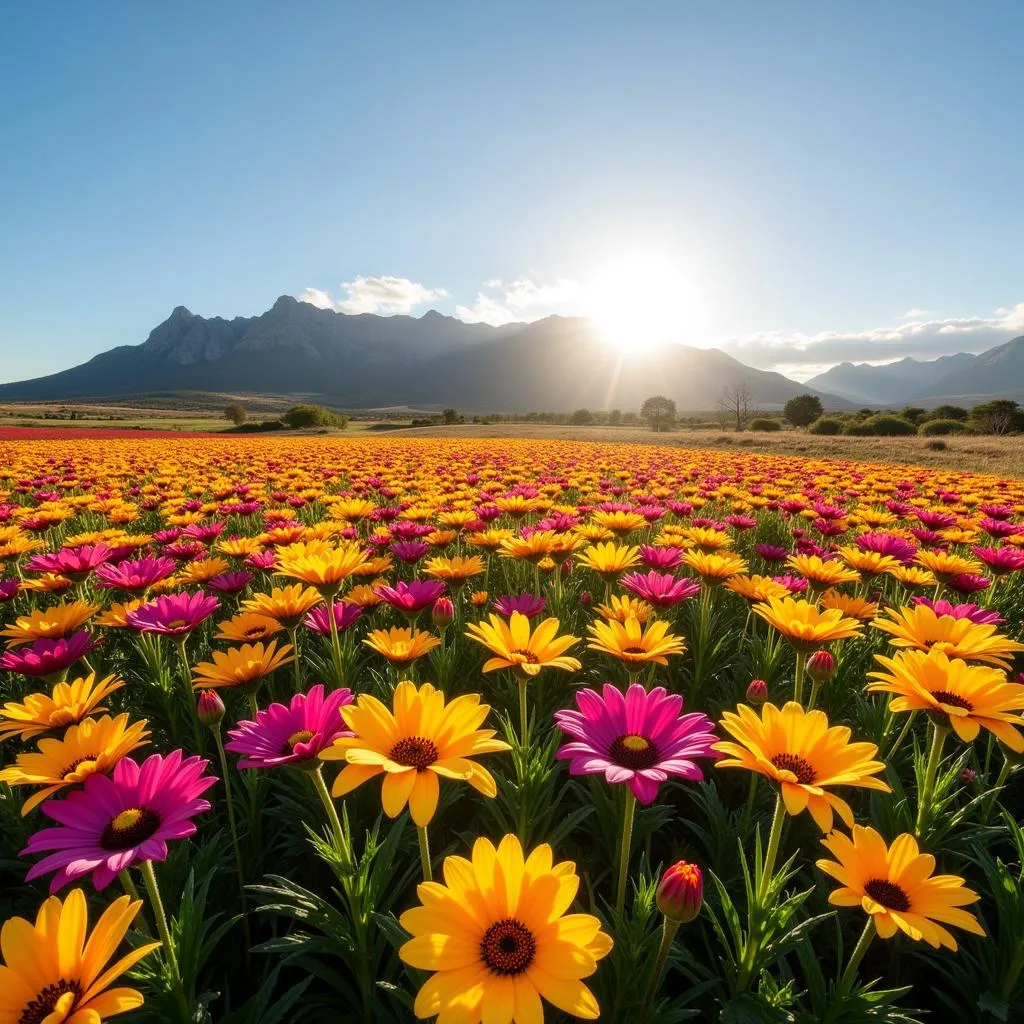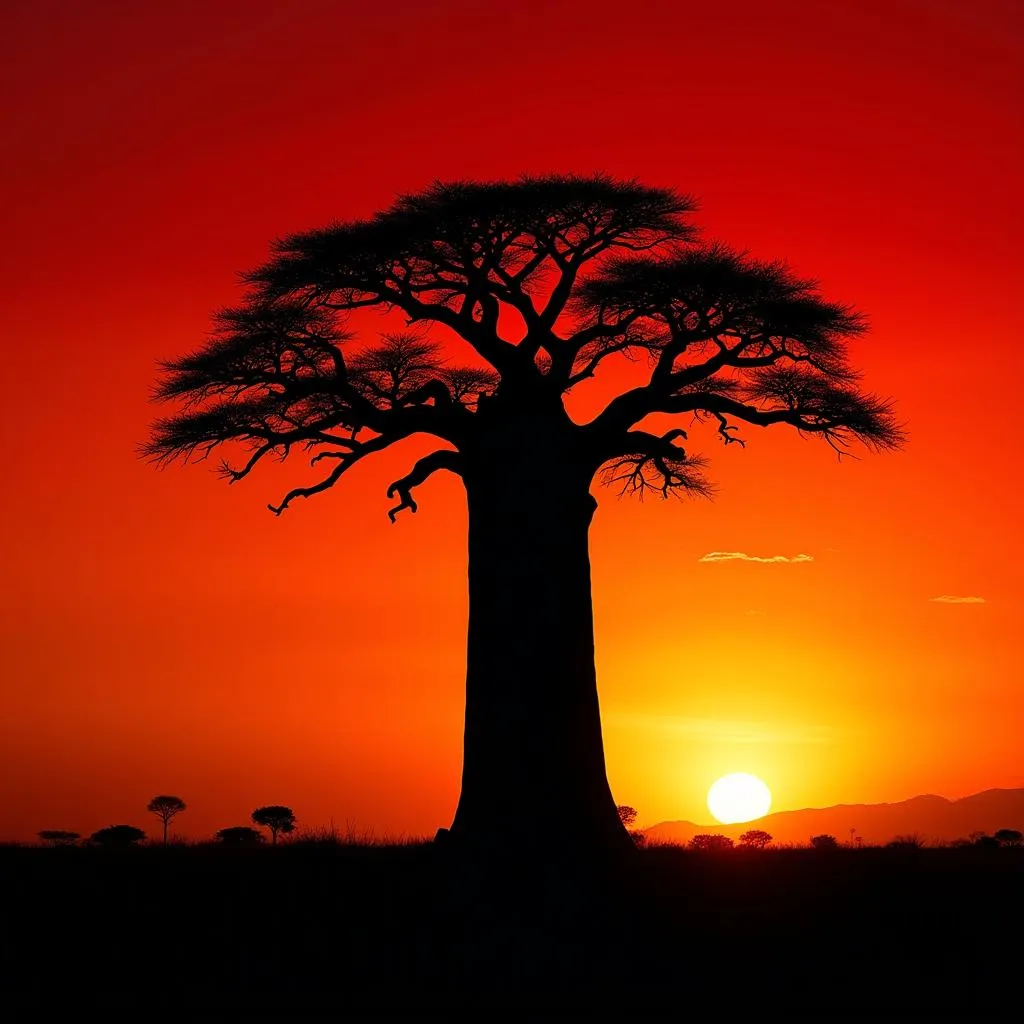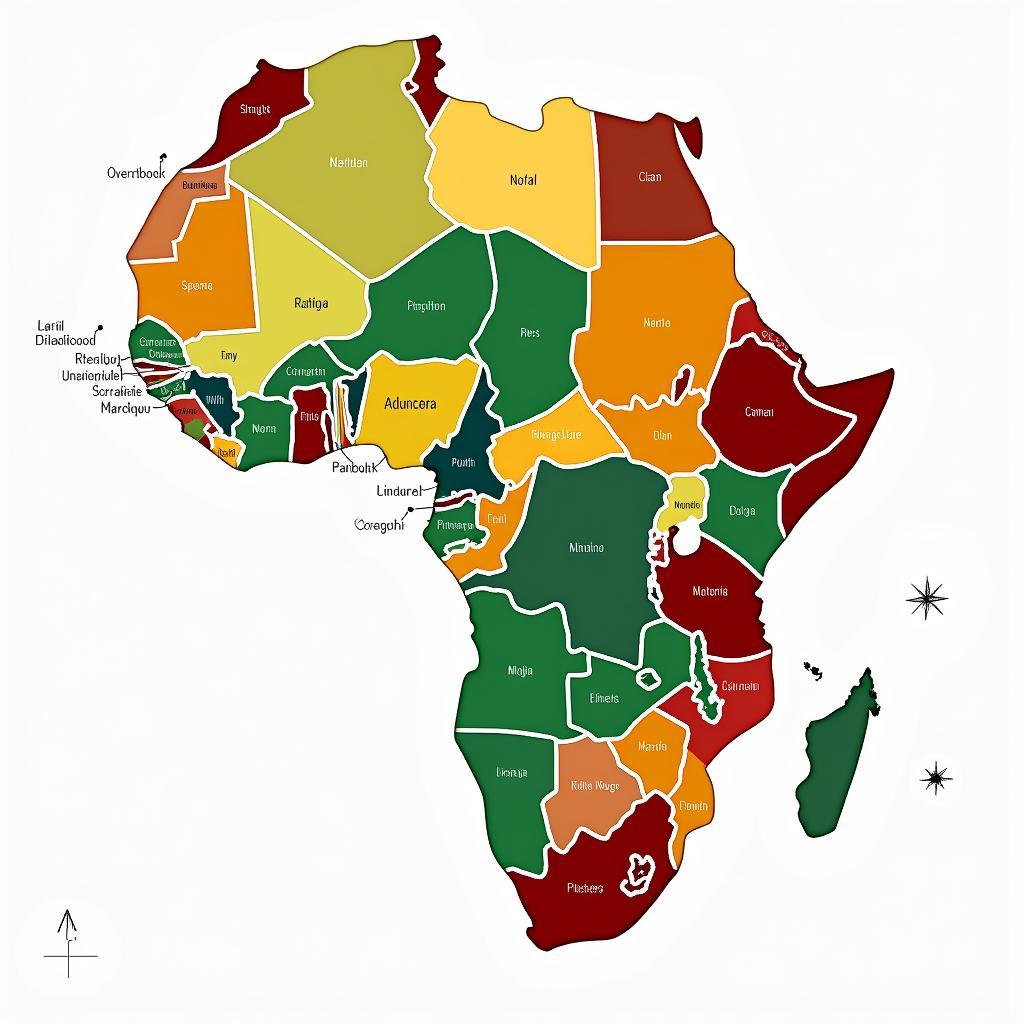A Guide to the Enchanting World of African Flowering Plants
Africa, a continent renowned for its diverse landscapes and rich biodiversity, is home to an astounding array of flowering plants. From the iconic proteas of South Africa to the vibrant hibiscus found across the continent, African Flowering Plants are a testament to nature’s artistry. This guide will take you on a journey through the fascinating world of these botanical wonders, exploring their beauty, ecological significance, and cultural importance.
 Field of African Daisies in Bloom
Field of African Daisies in Bloom
Unveiling the Diversity: From Arid Deserts to Lush Rainforests
African flowering plants exhibit remarkable adaptability, thriving in diverse habitats ranging from arid deserts and savannas to lush rainforests and coastal regions. This incredible diversity is a result of the continent’s varied climate and topography. For instance, the Namib Desert in Southern Africa is home to the Welwitschia mirabilis, a unique plant with only two leaves that can live for over a thousand years. In contrast, the Congo Basin, with its high rainfall and humidity, boasts an abundance of orchids, ferns, and other epiphytes.
One of the most well-known groups of African flowering plants is the protea family. Found predominantly in Southern Africa, proteas are known for their large, showy flower heads that resemble artichokes or pincushions. The King Protea (Protea cynaroides), South Africa’s national flower, is a stunning example, with its enormous pink and cream blooms. You can find more information on this fascinating plant species on our African Daisy Plant page.
A Tapestry of Colors and Forms: The Beauty of African Flowers
African flowering plants captivate the senses with their vibrant colors, intricate forms, and intoxicating scents. The Bird of Paradise (Strelitzia reginae), with its beak-like orange and blue flowers, resembles a tropical bird in flight. The African Lily (Agapanthus) produces clusters of trumpet-shaped flowers in shades of blue, purple, and white, adding a touch of elegance to gardens worldwide. The African Violet (Saintpaulia), native to Tanzania and Kenya, enchants with its velvety leaves and delicate purple flowers, making it a popular houseplant.
The flowering season for many African plants varies depending on the species and their specific location. If you’re curious about a specific plant, like the African Daisy, you can find more information about its African Daisy Flowering Season on our website.
 Close-Up of an African Violet's Delicate Purple Flowers
Close-Up of an African Violet's Delicate Purple Flowers
More Than Just Beauty: Ecological and Cultural Significance
African flowering plants play a vital role in their ecosystems, providing food and shelter for a wide range of insects, birds, and mammals. The nectar-rich flowers attract pollinators like bees, butterflies, and sunbirds, ensuring the continuation of plant life. Many species also have medicinal properties, used by local communities for generations to treat various ailments.
Beyond their ecological importance, African flowering plants hold cultural significance in many societies. They are often used in traditional ceremonies, festivals, and rituals. For instance, the Kola nut (Cola acuminata), found in West Africa, is a symbol of hospitality and is often shared at social gatherings.
Exploring African Flowering Plants: A World of Wonder Awaits
The world of African flowering plants offers a captivating glimpse into the continent’s natural heritage. Whether you’re a seasoned botanist or simply appreciate the beauty of nature, exploring these botanical wonders is an enriching experience. From the vibrant blooms of the savanna to the delicate orchids of the rainforest, each plant tells a story of adaptation, resilience, and the intricate web of life on Earth.
 Majestic Baobab Tree Silhouetted Against a Vibrant Sunset
Majestic Baobab Tree Silhouetted Against a Vibrant Sunset
African Flowering Plants: FAQs
What are some popular African flowering plants for gardens?
Many African flowering plants thrive in gardens around the world. Some popular choices include:
- African Daisy (Osteospermum): These cheerful daisies come in a variety of colors and are relatively easy to grow. They prefer sunny locations and well-drained soil. Learn more about cultivating these beauties at your local African Daisy Bunnings.
- Bird of Paradise (Strelitzia reginae): This striking plant adds a touch of the tropics to any garden. It prefers warm climates and well-drained soil.
- Protea: These unique flowers come in a variety of shapes and colors. They prefer acidic soil and full sun.
- African Lily (Agapanthus): These elegant flowers add a touch of sophistication to gardens. They prefer full sun to partial shade and well-drained soil.
What is the national flower of South Africa?
The national flower of South Africa is the King Protea (Protea cynaroides), known for its large, pink and cream flower heads.
What is the ecological importance of African flowering plants?
African flowering plants play a crucial role in their ecosystems by providing food and shelter for various animals, attracting pollinators, and contributing to the overall biodiversity of the region.
Do African flowering plants have any medicinal uses?
Yes, many African flowering plants have traditional medicinal uses. However, it’s important to note that self-treating with plants can be dangerous, and it’s always best to consult with a qualified healthcare professional.
Where can I learn more about African birds?
For those interested in the avian wonders of the continent, our dedicated page on African Birds Wikipedia provides a wealth of information. Discover the diverse species, habitats, and fascinating behaviors of these feathered creatures.
Discover More About the Wonders of Africa
Explore the intriguing world of the African Ice Plant and delve deeper into the fascinating flora of this incredible continent.
If you have any further questions about African flowering plants or any aspect of African Life, feel free to reach out. Contact us at:
Phone: +255768904061
Email: kaka.mag@gmail.com
Address: Mbarali DC Mawindi, Kangaga, Tanzania
We have a dedicated customer support team available 24/7 to assist you.

